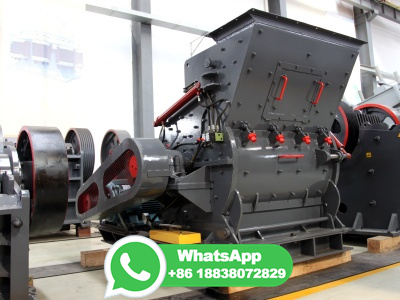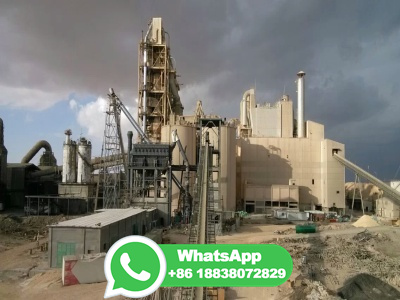How coal is formed ZME Science
Coal, one of the world's most impactful fossil fuels, was formed millions of years ago, in very specific conditions. Most of the coal on Earth formed approximately 300 million years ago from the ...

Coal, one of the world's most impactful fossil fuels, was formed millions of years ago, in very specific conditions. Most of the coal on Earth formed approximately 300 million years ago from the ...

Explain the process of formation of coal in nature. Expanded Universal Science > Chapter 5 Coal and Petroleum > ASSESSMENT ZONE > Q F. EASY. 8th CBSE. IMPORTANT. Earn 100.

With more heat, time, and pressure, the kerogen underwent a process called catagenesis, and transformed into hydrocarbons. Hydrocarbons are simply chemicals made up of hydrogen and carbon. Different combinations of heat and pressure can create different forms of hydrocarbons. Some other examples are coal, peat, and natural gas.

Coal is a combustible black or brownishblack sedimentary rock with a high amount of carbon and hydrocarbons. Coal is classified as a nonrenewable energy source because it takes millions of years to form. Coal contains the energy stored by plants that lived hundreds of millions of years ago in swampy forests. Layers of dirt and rock covered the ...

1) Formation in Earth's Mantle. Geologists believe that the diamonds in all of Earth's commercial diamond deposits were formed in the mantle and delivered to the surface by deepsource volcanic eruptions. These eruptions produce the kimberlite and lamproite pipes that are sought after by diamond prospectors. Most of these pipes do not contain ...

As more soil got deposited over them, they were compressed. The temperature also rose as they sank deeper and deeper. Under high pressure and high temperature, dead plants got slowly converted to coal. As coal contains mainly carbon, the slow process of conversion of dead vegetation into coal is called carbonization.

Coal is a black or brownishblack sedimentary rock that can be burned for fuel and used to generate is composed mostly of carbon and hydrocarbons, which contain energy that can be released through combustion (burning). Coal is the largest source of energy for generating electricity in the world, and the most abundant fossil fuel in the United States.

Hi, it looks like you're using AdBlock : (. Coal is a hard black coloured substance which is mainly carbonWhat are the uses of Coal?Different uses of Coal areIt is used in villages to cook foodIt is used in Thermal power plants to produce electricityIt was used in steam engines of train. It produced steam which ran the steam enginesHow is coa.

lignite? Coal formed millions of years ago when the earth was covered with huge swampy forests where plants giant ferns, reeds and mosses grew. As the plants grew, some died and fell into the swamp waters. New plants grew up to take their places and when these died still more grew.

Coking. Coking coal is an essential raw material for the production of iron and steel. Coke is a solid carbonaceous residue formed from coking coal (a lowash, lowsulphur bituminous coal, also known as metallurgical coal), which is used in make steel and other iron products [].Coke is produced by burning coal at temperatures up to 1000 °C in the absence of oxygen to remove the volatile ...

Natural gas is a fossil fuel energy source. Natural gas contains many different compounds. The largest component of natural gas is methane, a compound with one carbon atom and four hydrogen atoms (CH 4 ). Natural gas also contains smaller amounts of natural gas liquids (NGLs, which are also hydrocarbon gas liquids ), and nonhydrocarbon gases ...

Updated on September 24, 2023 How Coal Forms Coal, oil, and hydrocarbons, in general, are made from living organisms that have been broken down from intense heat and pressure millions of years ago. Marine organisms like algae and plants died over the ocean floor. Then, they were compacted into the ground and heated in an environment without oxygen.

Coal to Liquids Technology. Coal to Liquids (CTL) technology is a pioneering process that holds the potential to revolutionize the way we access and utilize energy resources. By converting coal, a vast and abundant fossil fuel, into liquid fuels such as diesel and gasoline, CTL offers a promising alternative to conventional petroleum sources.

Answer: coal is composed of carbon, hydrogen, oxygen, nitrogen, sulphur, moisture, and incombustible mineral matter (, ash). When coal is burned, the carbon. Fluorinated gases are not formed by coal combustion. Coals are formed from the accumulation of vegetable debris in specialized environments. Coal takes millions of years to form.

Explanation: Coal formed millions of years ago when the earth was covered with huge swampy forests where plants giant ferns, reeds and mosses grew. ... Heat and pressure produced chemical and physical changes in the plant layers which forced out oxygen and left rich carbon deposits. Advertisement.

Diagenesis is a process of compaction under mild conditions of temperature and pressure. When organic aquatic sediments (proteins, lipids, carbohydrates) are deposited, they are very saturated with water and rich in minerals. ... This behavior is contrary to what is associated with coal formation. In the case of terrestrial burial, the organic ...

Petroleum Petroleum is a fossil fuel that naturally occurs in the liquid form created by the decomposition of organic matter beneath the surface of the earth millions of years ago. These fossil fuels are then refined into usable substances such as petrol, kerosene, etc.

There are four stages in the coal formation. They are peat, lignite, bituminous and anthracite. These stages depend upon the conditions to which the plant remains are subjected after they were buried. Greater the pressure and heat, the higher the rank of coal. Higherranking coal is denser and contains less moisture and gases and has a higher ...

ARTICLE Coal Coal is a nonrenewable fossil fuel that is combusted and used to generate electricity. Mining techniques and combustion are both dangerous to miners and hazardous to the environment; however, coal accounts for about half of the electricity generation in the United States. Grades 9 12 Subjects

How Natural Gas Is Formed. Natural gas is a fossil fuel, like oil and coal, which releases pollution and global warming emissions when burned. Methane, the primary component of natural gas (or just "gas"), is itself a potent global warming pollutant, more than 80 times more powerful than carbon dioxide over a 20year period. Like oil, gas is a ...

Formation of coal. According to the current state of knowledge, coal is produced in nature by the socalled "carbonization" of plant parts. The biological material is initially transformed into peat in the absence of air by squeezing of pore water and biochemical processes and with further progression transformed by a diagenetic process ...

The process that microbes use to create a methane precursor molecule from coal. Anaerobic microbes live in the pore spaces between coal. They produce enzymes that they excrete into the pore...

It is the coal with the lowest carbon content. The carbon content is only about 6070 %. It is formed during the younger stages of coal formation and thus has a lower carbon content. Due to the less amount of carbon, it is not fully black in colour and is somewhat brown. Lignite is used in electricity generation and in fertilizer production.

Petroleum, also known as crude oil, or simply oil, is a naturally occurring yellowishblack liquid mixture of mainly hydrocarbons, and is found in geological name petroleum covers both naturally occurring unprocessed crude oil and petroleum products that consist of refined crude oil.. Petroleum is primarily recovered by oil drilling. ...

sedimentary rock, rock formed at or near Earth's surface by the accumulation and lithification of sediment (detrital rock) or by the precipitation from solution at normal surface temperatures (chemical rock). Sedimentary rocks are the most common rocks exposed on Earth's surface but are only a minor constituent of the entire crust, which is dominated by igneous and metamorphic rocks.

When coal burns, it releases carbon dioxide and other emissions in flue gas, the billowing clouds you see pouring out of smokestacks. Some clean coal technologies purify the coal before it burns. One type of coal preparation, coal washing, removes unwanted minerals by mixing crushed coal with a liquid and allowing the impurities to separate and ...

Coal rank is a measure of coal maturity and is the most fundamental concept that relates both to the coalification history and utilization potential of a coal. Fig. shows the change in chemical and physical properties with rank from bituminous to anthracite coals ( Teichmuller Teichmuller, 1975 ).

There are four major types (or "ranks") of coal. Rank refers to steps in a slow, natural process called "coalification," during which buried plant matter changes into an ever denser, drier, more carbonrich, and harder material. The four ranks are: Anthracite: The highest rank of coal. It is a hard, brittle, and black lustrous coal, often referred to as hard coal, containing a high ...

71,757 How is Coal Formed? The formation of coal takes millions of years, which is why it is an exhaustible and nonrenewable natural resource. It was formed around 300 million years ago when the earth was covered with swampy forests. When plants in these forests mainly trees, mosses, ferns, and reeds died, they fell into the swamps.

Carbon monoxide (chemical formula CO) is a poisonous, flammable gas that is colorless, odorless, tasteless, and slightly less dense than monoxide consists of one carbon atom and one oxygen atom connected by a triple is the simplest carbon coordination complexes, the carbon monoxide ligand is called is a key ingredient in many processes in industrial ...

The slow process by which the dead plants buried deep under the earth have become coal is called coal was formed from remains of plants therefore coal is called a fossil fuel. When heated in air,coal burns and produce,mainly carbon dioxide lot of heat energy is also produced during the burning of coal.

Charcoal. Wood pile before covering with turf or soil, and firing it ( c. 1890) Charcoal is a lightweight black carbon residue produced by strongly heating wood (or other animal and plant materials) in minimal oxygen to remove all water and volatile constituents. In the traditional version of this pyrolysis process, called charcoal burning ...

Coal is a combustible rock mainly composed of carbon along with variable quantities of other elements, mostly hydrogen, sulphur, oxygen and nitrogen. Coal occurs as layers, called coal beds or coal seams, that are found between other sedimentary rocks. Coal is slightly denser than water but less dense than most of the rocks of the Earth's crust ...

Solution. Fossil fuels are formed by decomposing dead and decaying plant or animal matter underground for millions of years. When any plant or animal dies, soil bacteria start decomposing the matter which was gradually buried by the layers of rock in the earth's crust which increases the heat and pressure inside, and as a result of heat, fossil ...

Coal is the most abundant fossil fuel on Earth. Its predominant use has always been for producing heat energy. It was the basic energy source that fueled the Industrial Revolution of the 18th and 19th centuries, and the industrial growth of that era in turn supported the largescale exploitation of coal deposits. Since the mid20th century, coal has yielded its place to petroleum and natural ...